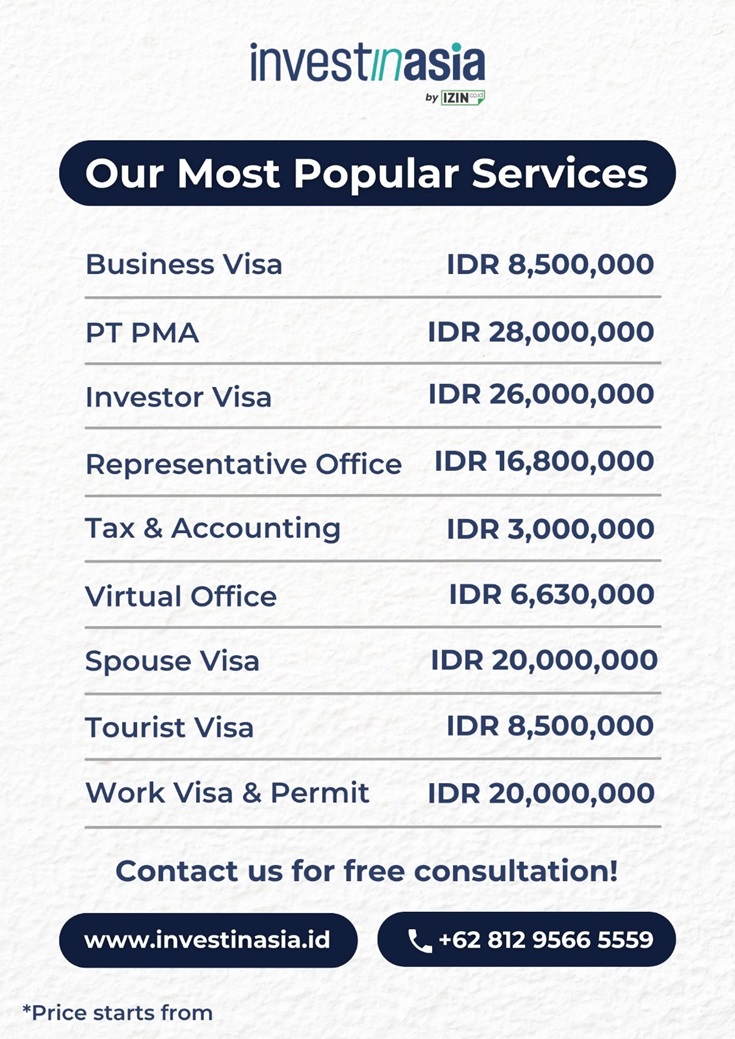Average wage in Bali refers to the monthly income earned by workers across Bali’s tourism-driven economy, with wage levels shaped by district-specific minimum wage regulations such as the UMP and UMK. Bali’s urban centers—Denpasar and Badung—set the benchmark for higher salaries due to higher living costs, dense commercial activity, and strong labor demand in hospitality, retail, and food service.
Average earnings in the province vary widely by industry, skill level, and experience, making wage analysis essential for employers, job seekers, and foreign workers assessing Bali’s 2025 salary landscape.
Also read: Working in Bali for Foreigners: Opportunities and Requirements
Average Salaries in Bali
In 2025, the average wage in Bali shows significant variation across different regions. With an official minimum wage of IDR 3,298,116.50 set for Denpasar, the capital city, the wage rates are highest in urban districts like Denpasar and Badung. Understanding the salary structure in Bali is crucial for both employers and employees, particularly as it relates to the local economic landscape.
Bali’s Wage Landscape in 2025


The official wage structure for Bali in 2025 sees Denpasar at the forefront, followed by Badung. These areas, due to their economic significance and higher cost of living, tend to offer more competitive wages. According to the Indonesian Ministry of Manpower, the minimum wage in Denpasar is IDR 3.3 million per month, while other regions may fall slightly below this amount.
Bali’s economy is heavily driven by tourism, and as a result, sectors like hospitality, retail, and food service dominate the labor market. This affects wage levels, with workers in tourism-heavy regions often earning higher wages compared to other sectors.
Also read: 25 High Paying Job Opportunities in Bali for Expats
The Regional Minimum Wage (UMR) in Bali
The regional minimum wage (UMR) in Bali serves as a crucial benchmark for ensuring fair compensation across different regions. Let’s take a closer look at the UMR for 2025, listed from highest to lowest:
- Badung Regency: IDR 3,534,338.88
- Denpasar City: Rp 3,298,116.50
- Gianyar Regency: Rp 3,119,080.00
- Tabanan Regency: Rp 3,102,520.45
- Klungkung Regency: Rp 2,996,561.00
- Karangasem Regency: Rp 2,996,561.00
- Bangli Regency: Rp 2,996,561.00
- Jembrana Regency: Rp 2,996,561.00
- Buleleng Regency: Rp 2,996,561.00
*Data from Kompas.com
Upon closer inspection, the wages in three regencies, namely Bangli, Karangasem, and Klungkung, are the same. This is because these three areas set the minimum wage equal to the UMP. Just to clarify, UMR or regional minimum wage refers to the minimum wage in a province and regency.
However, currently, the term UMR has been replaced with UMP (provincial minimum wage) and UMK (regional minimum wage). As a point of comparison, the UMR salary in Bali can be compared to the minimum wage in surrounding areas. For example, Banyuwangi Regency in East Java, located west of Bali, has a minimum wage of Rp 2,638,628.
Factors Influencing Bali’s Salary Landscape


Several factors contribute to the fluctuation of salaries in Bali:
- Job Type: Roles with higher skill levels and responsibilities generally command higher salaries.
- Work Experience: Increased years of experience often correlate with higher earnings.
- Education: Higher levels of education typically result in enhanced earning potential.
- Location: Bali’s status as a tourist destination tends to yield higher wages compared to other regions in Indonesia.
- Industry: Certain industries, such as finance and technology, offer higher salaries compared to others.
Also read: How to Start a Business in Bali as Foreigners: A Complete Guide
Tips for Enhancing Your Salary in Bali
For those seeking to boost their income in Bali, consider the following tips:
- Skill Enhancement: Pursue training or courses to upgrade your skills and knowledge.
- Gain Work Experience: Seek opportunities to gain relevant work experience in your field of interest.
- Further Education: Consider pursuing higher education to enhance your qualifications.
- Relocation: If feasible, explore relocating to areas with higher salary prospects.
- Negotiation: Don’t hesitate to negotiate your salary when presented with a job offer.
Also read: Moving to Bali: A Guide for Expats’ Permanent Stay
Navigating the average salary and wage landscape in Bali requires a nuanced understanding of various factors influencing income levels. By exploring average earnings across professions, understanding the regional minimum wage, and considering key determinants, individuals can make informed decisions to enhance their earning potential on this beautiful island.
So, are you interested in starting work in Bali? If yes, don’t forget to promptly apply for an Indonesia work visa.
Furthermore, you can also initiate business and investments here. However, remember to apply for an Indonesia business visa and Indonesia investor visa/KITAS.
To ensure a simpler visa application process, you can take advantage of the services provided by InvestinAsia for Indonesia visa applications.
Chat with us now and get a special offer!
FAQs about Bali’s Average Wage
What is the minimum wage in Bali for 2025?
In 2025, the minimum wage for Denpasar is IDR 3,298,116.50, with slightly lower wages in rural districts.
Why are wages higher in Denpasar and Badung?
These regions have a higher cost of living and are home to Bali’s major tourism areas, leading to greater demand for labor in hospitality and service sectors.
How does tourism impact wages in Bali?
Tourism-driven areas like Kuta and Seminyak see higher wages due to increased demand for workers in the hospitality, retail, and entertainment industries.
Are there wage differences across Bali’s districts?
Yes, there are significant wage differences, with urban districts like Denpasar and Badung offering higher wages compared to rural areas.
What sectors offer the highest wages in Bali?
Sectors like hospitality, tourism management, and luxury services typically offer the highest wages in Bali, particularly in tourist-centric areas.



